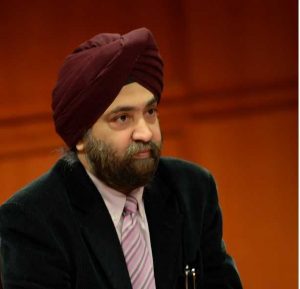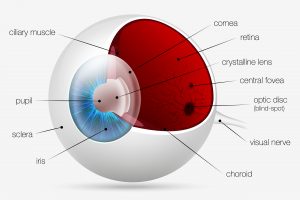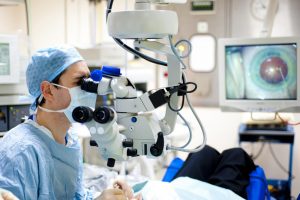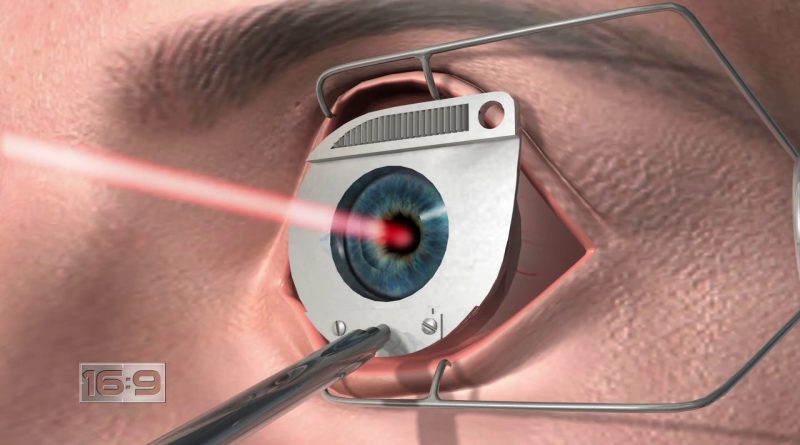Less Incision, More Precision
In the blade-free new Femtosecond laser technology for cataract surgery, the incisions heal faster and the risk of infection is minimum.
Dr . Mahipal S Sachdev
The clear and transparent human crystalline lens is a part of the focusing mechanism of the eye. With increasing age, the lens becomes cloudy and opaque thereby hampering normal vision. Any opacity in the crystalline lens which leads to decreased vision is called cataract or “Safed Motia”.
About half t he population by the age of 60 will get cataract, while around 80 per cent people will have cataract in at least one eye by the age of 70 years. Approximately 8 million people in India have hazy vision due to cataract.
he population by the age of 60 will get cataract, while around 80 per cent people will have cataract in at least one eye by the age of 70 years. Approximately 8 million people in India have hazy vision due to cataract.

SYMPTOMS OF CATARACT
• Hazy, fuzzy and blurred vision
• Increased sensitivity to light resulting in glare & difficulty in night driving
• Poor night vision, poor depth perception, e.g. difficulty in going downstairs
• Frequent need to change eyeglass & as cataract develops, even high power glasses would no longer improve the vision.

TREATMENT PLAN
Surgical correction is the only treatment for cataract. Phacoemulsification with foldable intraocular lens (IOL) remains the standard surgery for cataract removal where using ultrasonic power, cataractous lens is broken down into small pieces and sucked out using a vacuum based aspiration system. A new artificial lens is implanted in its place which allows seeing clearly.
ROBOTIC LASER CATARACT SURGERY
Femtosecond laser technology or robotic blade-free laser cataract surgery is a leap ahead of the traditional Phacoemulsification cataract surgery (which is a manual technique, where the surgeon makes cuts in the cornea using a hand-held blade). Through these incisions the surgeon then inserts surgical instruments inside the eye to make a manual round opening (capsulorrhexis) around the cataract. An ultrasound probe breaks the old, cloudy lens into pieces. After removing those pieces through the incision, the surgeon inserts an intraocular lens (IOL) inside the eye to replace the natural lens.
In contrast to conventional cataract surgery, the innovative Femtosecond laser technology allows for the creation of corneal incisions and capsulorrhexis with computer- guided, laser-controlled precision. The laser also fragments the cataract into tiny pieces which can then be safely removed by the surgeon. The critical high resolution eye image mapping and measurements that are used to plan and perform the Femtosecond laser cataract surgery to exact specifications are not attainable with traditional surgery. With the use of Femtosecond laser, each aspect of this advanced blade-free cataract surgery is automatically programmed and monitored by the computer.
While cataract surgeons are doing a good job now, Femtosecond laser technology introduces the ability for even the best cataract surgeons to be more consistent. It has the potential to, in the simplest of terms, help automate many of the crucial steps of cataract surgery resulting in a quicker and safer operation and improved surgical outcome.
FEMTOSECOND LASER ADVANTAGE
Blade-free, laser-created incisions: deliver precise cuts and is more accurate than manual blade incision
The wound architecture in traditional surgery is limited by hand- held instruments and manual incisions. In contrast, the Femtosecond laser allows for computerized programming of corneal incisions. The precisely structured self-sealing incisions heal faster and minimize the risk of post-operative infections.
Consistent circular laser-created capsulorrhexis enhances final visual outcome
The first step in Femtosecond laser assisted cataract surgery is the creation of the capsular opening (capsulorrhexis) around the cataract with the help of laser. The opening in the capsule through the use of this technology is twice as strong and 5 times more accurate in size and shape as compared to the manual opening. The laser then breaks down the cataract into smaller fragments. Then corneal incisions are made with robotic precision. All these steps are performed without using any blade or needle.
Enables astigmatism correction at the time of cataract surgery
In people suffering from astigmatism, the front surface of the eye (cornea) is not curved properly. The curve is irregular resulting in blurred vision. Laser-assisted cataract surgery allows for correction of astigmatism at the time of surgery.
Improved safety for the patient
Femtosecond laser aims to convert the manual, multi-step, multi-tool Phaco procedure to one with laser-created, and computer-controlled precision. The critical high resolution eye image mapping and measurements that are used to plan & perform the surgery to exact specifications are not attainable with traditional surgery. In Femtosecond laser-assisted cataract surgery, every aspect of cataract surgery is automatically programmed and monitored by the computer resulting in a safer operation and improved surgical outcome.
If you need to undergo cataract surgery, opt for a centre which offers the latest technology combined with the expertise of a qualified cataract surgeon. Robotic laser cataract surgery technology is available at Centre for Sight’s New Delhi, Meerut, Agra, Jaipur, Indore and Hyderabad branches.
(The author is chairman, Centre for Sight Group of Eye Hospitals)

